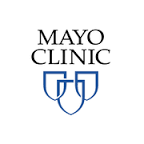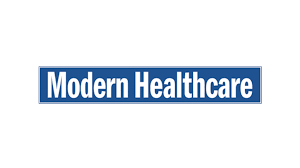Session: The importance of having a comprehensive plan to prevent workplace violence in ASCs

Editor's Note In this session, Beverly Kirchner, BSN, RN, CNOR(E), CASC, vice president of compliance at TriasMD and ambulatory surgery center (ASC) track leader for the OR Manager Conference, spoke on behalf of Parkland Health’s JD Boucher and Karen Garvey on how violence against healthcare workers is rising and requires…
Transparent oversight is key to safe surgical innovation

Editor's Note Unchecked surgical innovation can harm patients, derail careers, and erode trust, Bulletin of the Royal College of Surgeons of England October 31 reports. Failures to properly evaluate and monitor new or modified procedures have led to patient harm, surgeon suspensions, and even criminal convictions, per the article, which…
New patient tool for seeking quality care includes surgery

Editor's Note Mayo Clinic has released a free, digital tool requiring no account or subscription that allows anyone to investigate healthcare quality by city, care specialty, or hospital, an October 30 press release from the health system reports. The tool includes search capability for a range of specific surgical specialties,…
Session: Advocacy in action—Empowering your teams toward successful legislative integration, safety excellence

Editor's Note Advocacy begins where safety meets purpose. That was the resounding message from UF Health Shands’ Michele Brunges, MSN, RN, CNOR, CHSE, director of surgical services; Katherine Hayes, BSN, RN, CNOR-CARD, nursing professional development specialist for perioperative services; and Kristy Perry, MSN, RN, CNOR, clinical coordinator of the north…
Why volunteering matters: Growth for nurses and the profession

Volunteering is, at its core, about giving back. Yet many volunteer opportunities also create pathways to elevate one’s career and professional identity. At the American Board of Perianesthesia Nursing Certification, Inc (ABPANC), nurse volunteers grow both personally and professionally, gaining new knowledge, forming connections, and finding renewed purpose and emotional…
Session: Bridge the gap—Finding a common mission between the OR and SPD

Editor's Note Rebuilding trust and redefining teamwork between the OR and sterile processing department (SPD) turned a near-failure into a high-functioning system at UCLA Health, according to Ronald Perez, JD, MSN, RN, NEA-BC, CNOR, executive director of perioperative services, and Jasmine Briones, MSN, RN, CNOR, director of perioperative services. What…
Workshop: Mastering The Joint Commission standards and CMS regulations

Editor's Note Hospitals that succeed in surveys are those that “hardwire safety so you’re not ramping up and down,” said John R. Rosing, MHA, FACHE, executive vice president and principal of Patton Healthcare Consulting. Speaking at the OR Manager Conference, Rosing reminded perioperative leaders, “If we’re really about providing quality…
Hospitals being squeezed: Anesthesia workforce gaps, payer cuts threaten surgery access

Editor's Note Hospitals are bracing for service reductions as anesthesia staffing shortages collide with reimbursement cuts, Modern Healthcare October 14 reports. Executives and staffing experts see mounting financial strain that could limit patient access and stall growth plans, with rural facilities most exposed. As detailed in the article, systems continue…
The Joint Commission makes nurse staffing a national performance goal for 2026

Editor's Note The Joint Commission has made nurse staffing a national benchmark for hospital accreditation, formally recognizing it as a core measure of patient safety and care quality, Nurse.org October 13 reports. For the first time, hospitals must meet specific staffing standards to earn or maintain accreditation. Under the new…
Federal pushback on CHAI exposes rifts over who should set healthcare AI rules

Editor's Note Federal officials’ public rebuke of the Coalition for Health AI (CHAI) highlights mounting tensions over who should shape guardrails for artificial intelligence (AI) in healthcare, Modern Healthcare October 10 reports. As hospitals accelerate AI adoption, industry leaders, regulators, and developers are clashing over how to ensure the technology’s…

 Free Daily News
Free Daily News